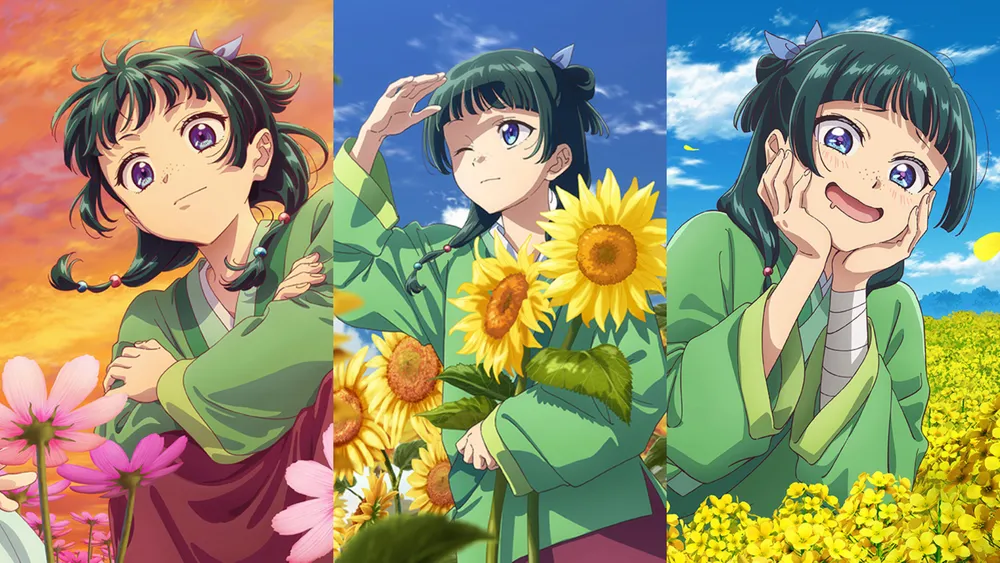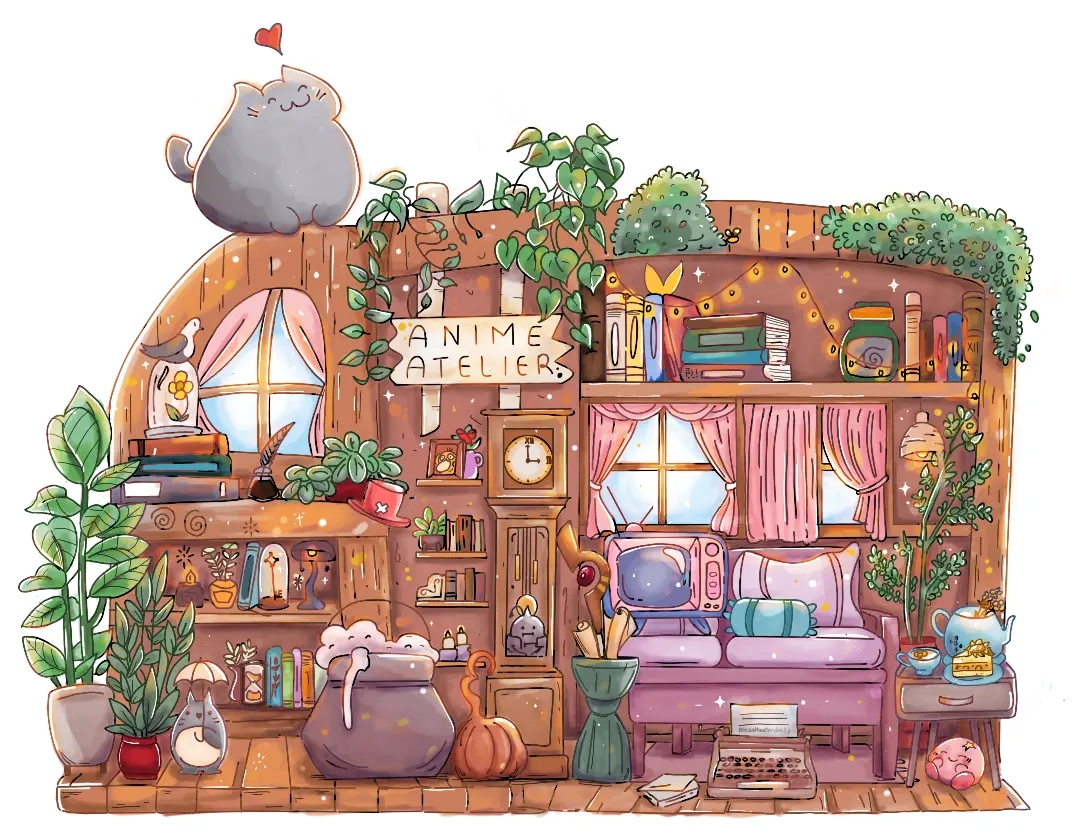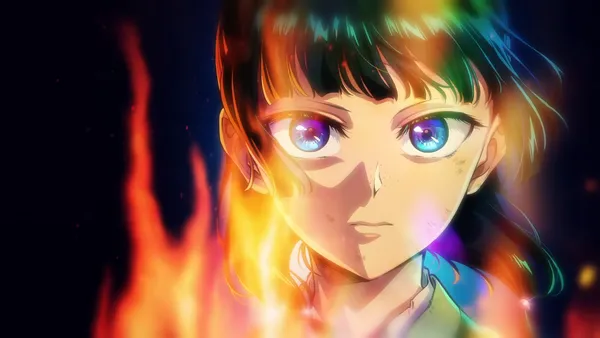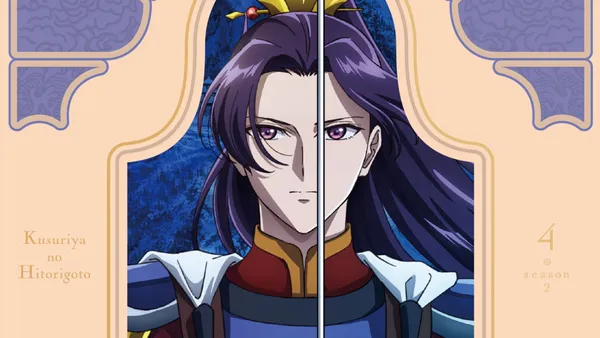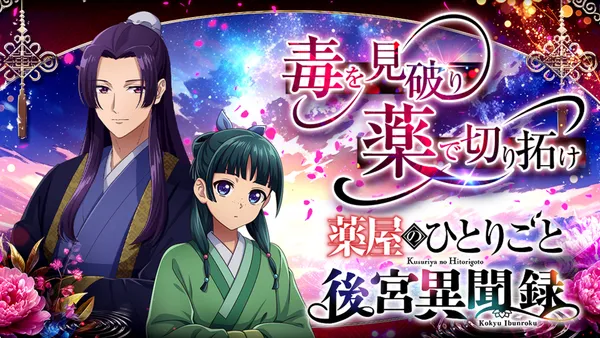The Apothecary Diaries 2024 Seasonal Illustrations and Their Flowers
The Apothecary Diaries anime is packed with all sorts of flowers and plants, and if you've been around social media, you've probably seen some of the specially drawn seasonal illustrations by the staff. These visuals come out every 22nd of the month (Cat Day in Japan is February 22, which sounds like "Nyan Nyan Nyan") and feature some of the anime's beloved characters with a flower or plant to match the season.
A full year has passed since the X (formerly Twitter) media project started, so it's the perfect time to look back and appreciate all of them! Not to mention, the visuals become even lovelier once you understand the symbolism behind the flowers and plants, as well as their meanings within the world of The Apothecary Diaries. And so, without further ado, here is a compilation of all the seasonal illustrations from July 2024 to June 2025.
July 2024 - Summer Lotus
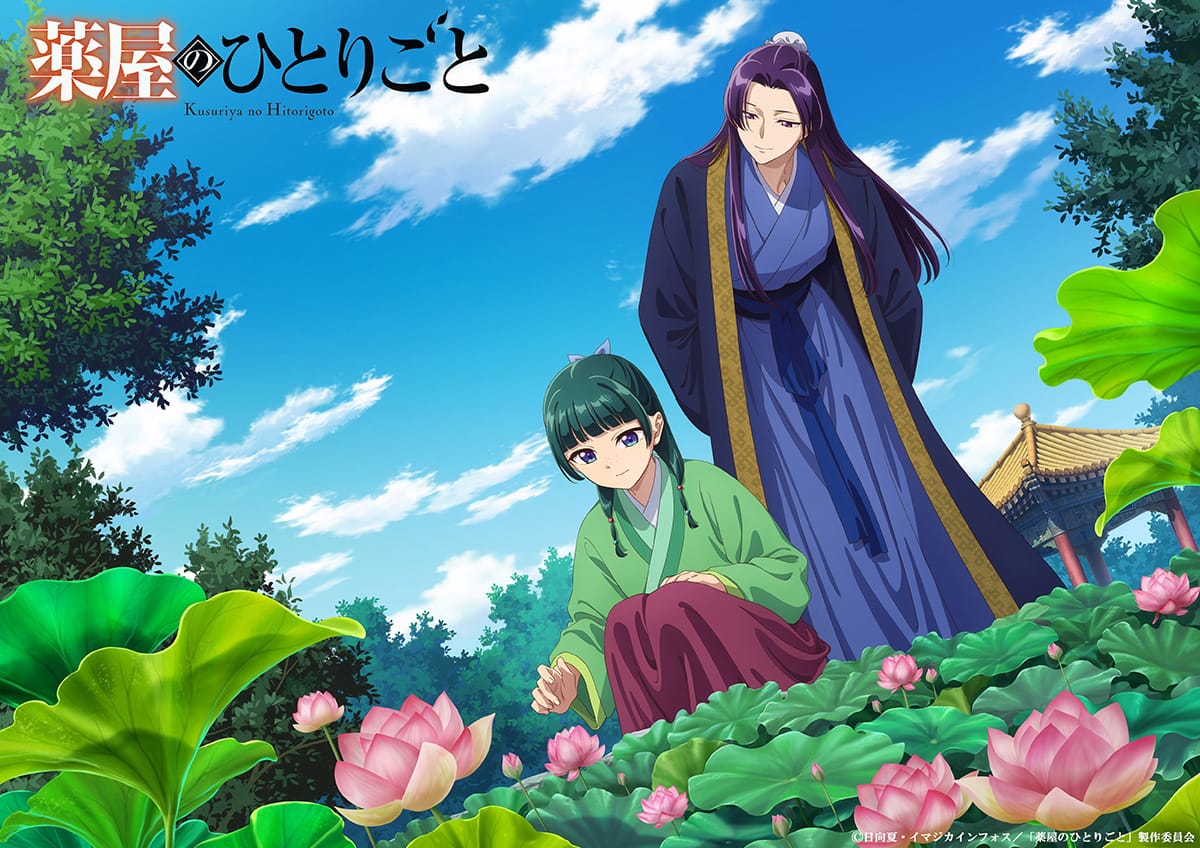
In July 2024, the first illustration featured Jinshi watching over Maomao as she cared for the summer lotus flowers.
Flower meaning: The lotus flower represents enlightenment and purity, and it can often be found in ponds near temples and shrines in Japan during the summer. Since it grows unstained in muddy water, the short-lived lotus flower is described as a symbol of beauty and transformation. The wheel-like leaves and the spike-shaped petals imply the perpetual cycle of existence, while the pure flowers symbolize the enlightenment that any person is capable of achieving.
Just like the lotus flower, Maomao remained strong and unwavering inside the rear palace, despite the many schemes and dangers inside. On a deeper dive, the reference can also be connected to the fact that Maomao and Jinshi work well together.
August 2024 - Sunflowers
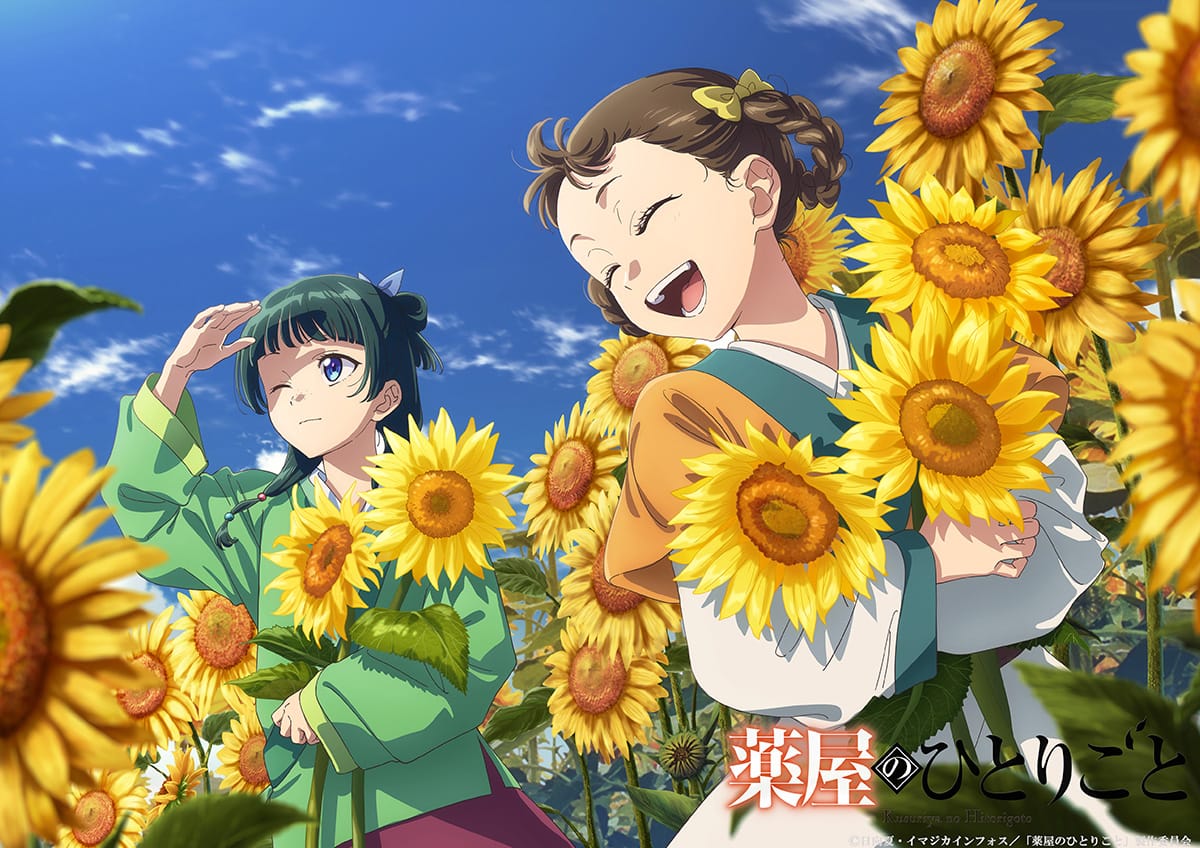
In August, the special illustration showed Maomao in a field of sunflowers with her close friend, Xiaolan.
Flower meaning: The Himawari, or sunflower, represents warmth, happiness, adoration, loyalty, and longevity. Its bright yellow petals and ability to follow the sun symbolize a deep admiration for someone and a wish for their long life.
Since Xiaolan is one of Maomao's first and closest friends in the palace, it is only fitting that these bright and yellow flowers are a symbol of their wholesome friendship – from providing the latest gossip, helping to care for a rose garden, caravan shopping, and to making ice cream together.
September 2024 - Silvergrass
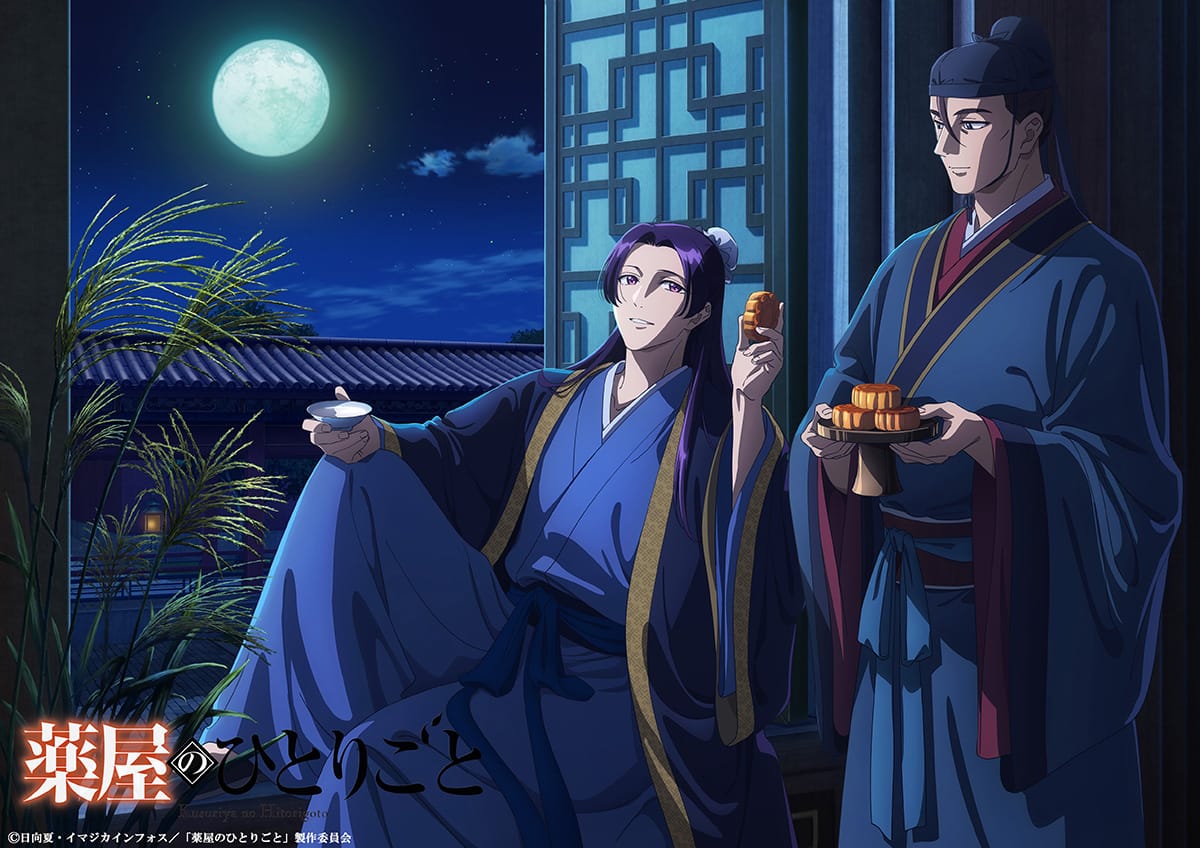
In September, the special illustration showed Jinshi and his attendant, Gaoshun, enjoying the night under the moonlight while having some mooncakes.
Flower meaning: The Silvergrass, also known as Miscanthus, Susuki Grass, or Pampas Grass, is one of the most famous plants in the Japanese autumn season and is closely tied to the tsukimi festival, where families gather for moon-viewing. The plant has tall, slender stems and feathery plumes that reflect the glow of the moonlight beautifully. It symbolizes a good harvest, beauty, and the transient passing of time. It is also thought to protect homes from evil spirits when near entrances.
The illustration came before the momentous reveal of Jinshi's true identity in the anime, but manga and light novel readers online caught on to the very-subtle-yet-obvious "moon" reference.
October 2024 - Cosmos
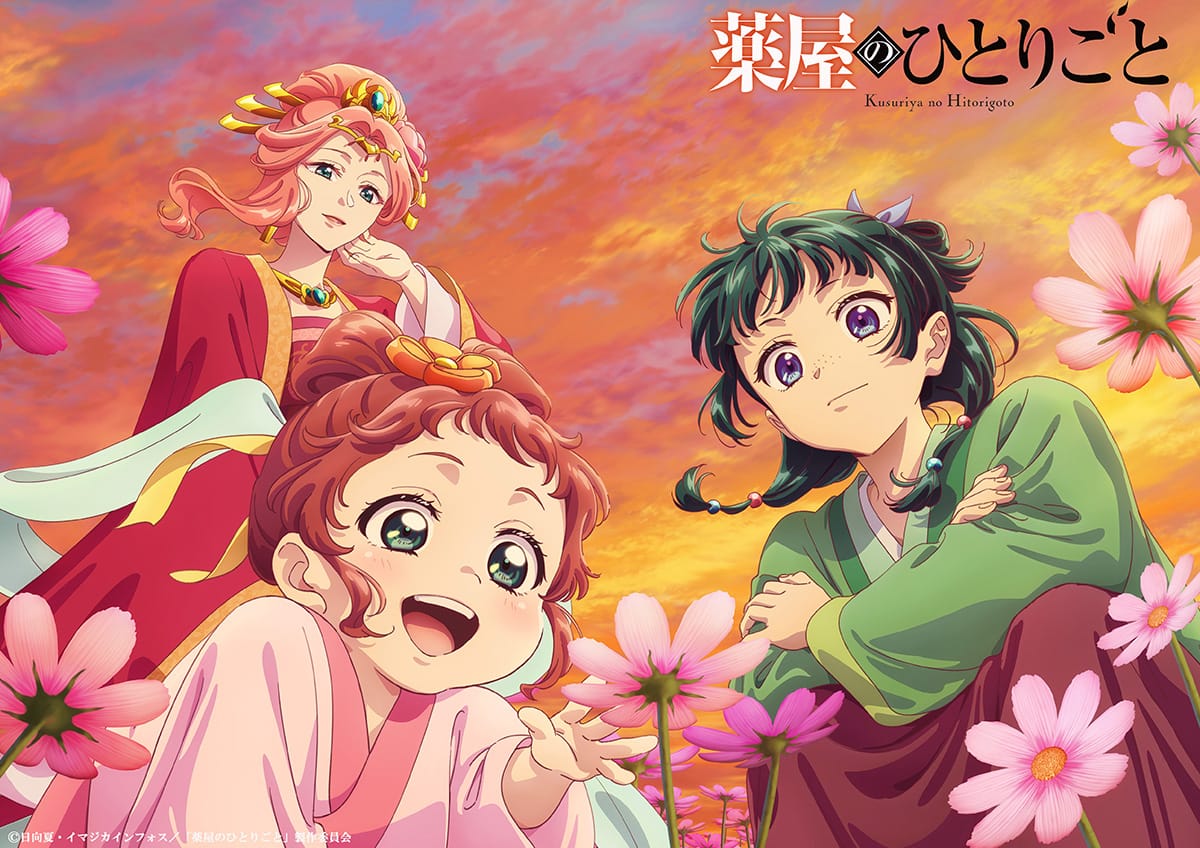
In December, the illustration featured Maomao, Gyokuyo, and Lingli, admiring the cosmos flowers.
Flower meaning: In Japan, the cosmos flowers, known as Akizakura or autumn cherry blossoms, symbolize order, harmony, and the innocence of young women. They are also associated with purity, humility, and peace. Their dainty petals stretch towards the sky, while their delicate stems make them dance in the wind. Although the weather may be cold in the winter, the signs of the cosmos flowers make it feel like spring.
Of course, the illustration highlights the sweet and precious Lingli. She can be described as a refreshing breath of sunshine, a happy new chapter in the lives of Gyokuyo, the Emperor, the Jade Pavilion, and the people around them inside the inner palace. It's also a heartwarming reminder that it was because of Maomao that she is healthy.
November 2024 - Autumn Leaves
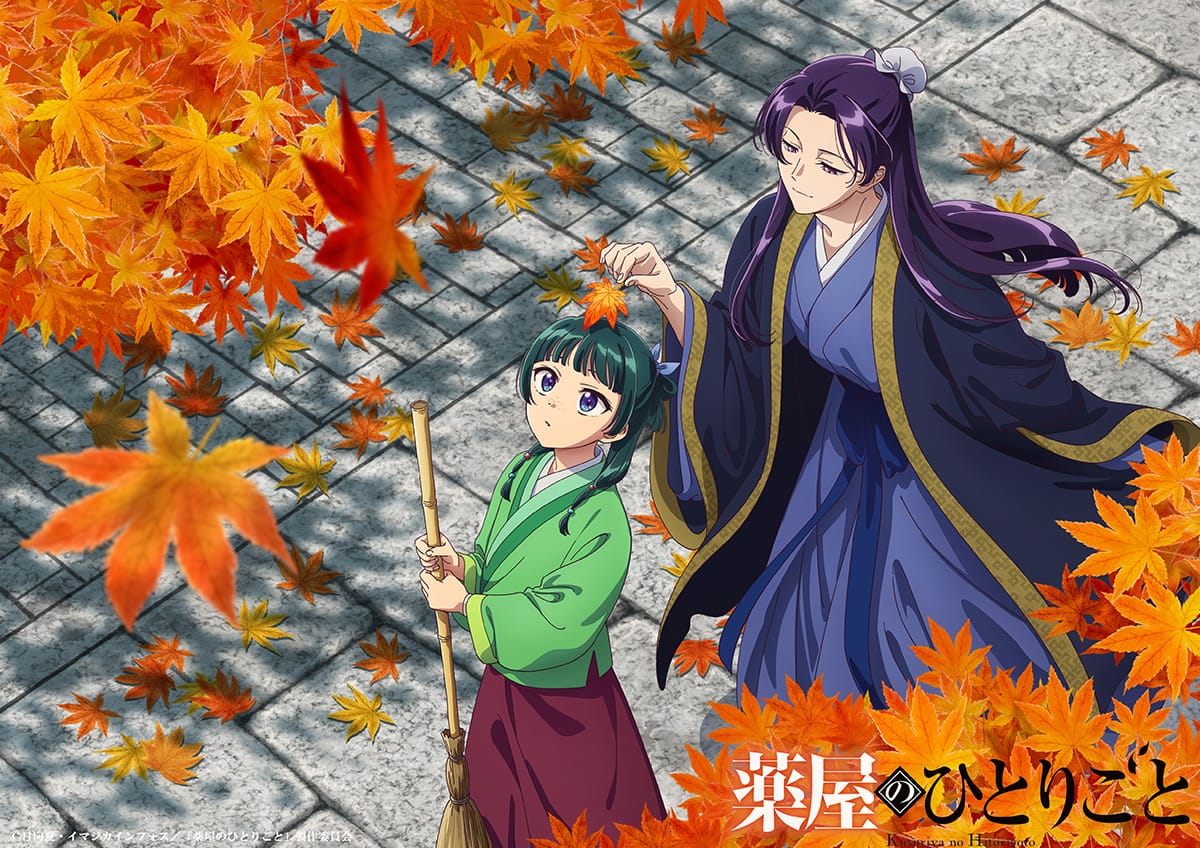
In November, the special illustration had Maomao admiring the fallen orange autumn leaves, while Jinshi playfully placed a leaf above her head.
Flower meaning: The autumn leaves, which can be referred to as Momiji (Maple Tree) or Koyo (all trees) in Japanese, represent nature's gradual transformation. Akin to spring's cherry blossoms, the autumn leaves don't symbolize renewal; instead, they evoke introspection, encouraging people to find beauty in the passage of time and the inevitable change of the seasons.
That said, while Maomao is lost in her sentimental thoughts about the past and future, the illustration also shows us that, despite the uncertainties of life, Jinshi still only has his eyes on Maomao.
December 2024 - Daffodils
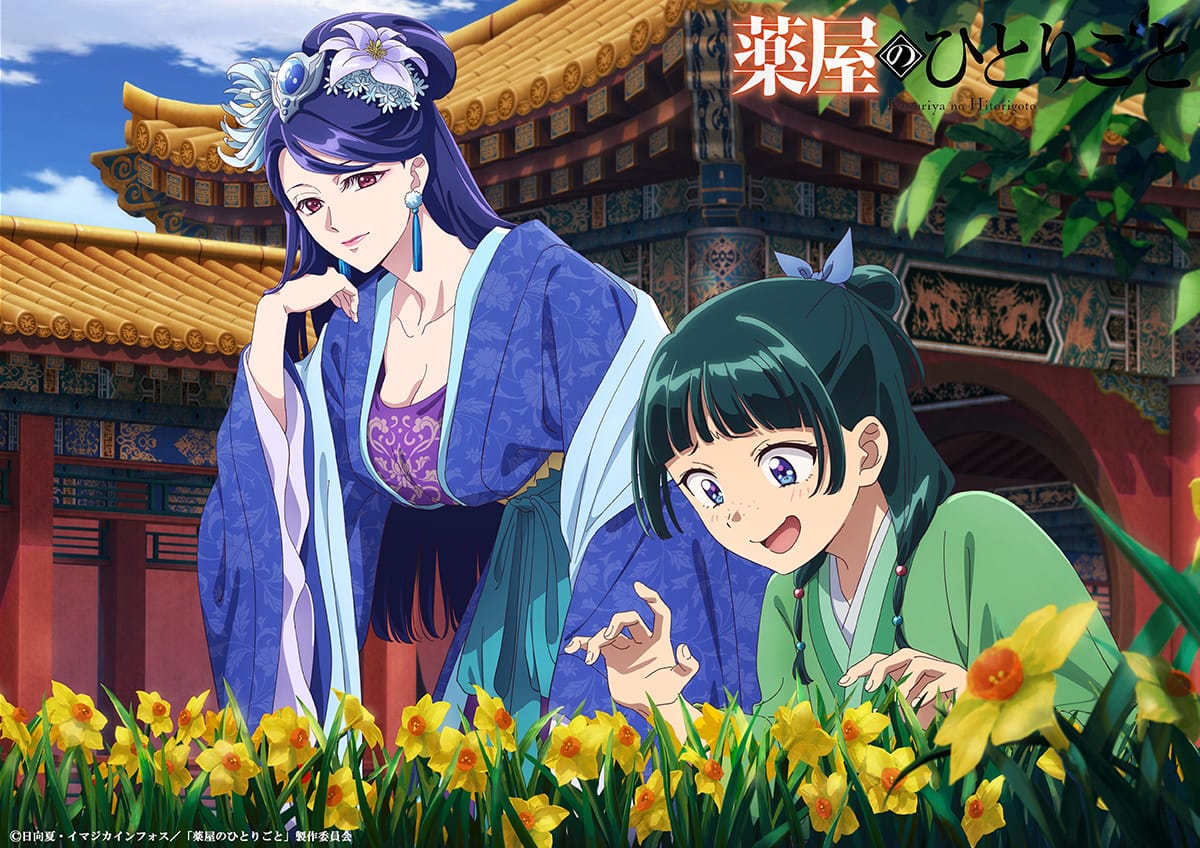
In the December illustration, Maomao and Lihua are looking at a garden of yellow daffodils.
Flower meaning: The daffodil, known as Suisen in Japan, represents respect, perseverance, and self-love. It is one of the first flowers from the "Four Friends of the Snow" (plum, wintersweet, and camellia) to announce the coming of spring, acting as a reminder of the strength to move forward after hardships.
If you think about the events and pain that Lihua has been through (highlighted in Season 1, Episode 4), you can't help but be in awe of her amazing transformation. Her strength, gentle nature, and the will to move forward are deeply moving, and just like the daffodil, she blooms. And for that, she appreciates Maomao.
January 2025 - Peony
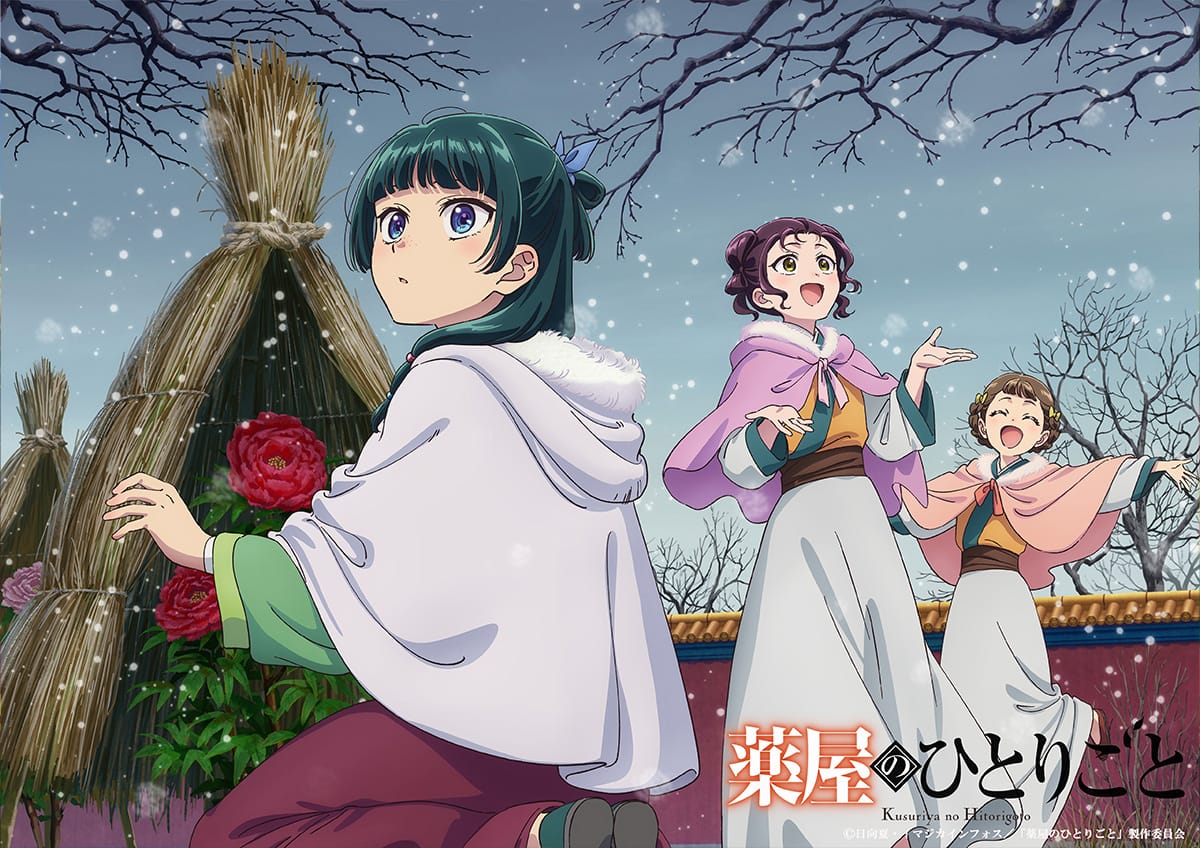
In January 2025, the illustration has Maomao, Xiaolan, and Shisui admiring the snow, while Maomao protects the red peony flowers with a warabotchi cover.
Flower meaning: There's a one-of-a-kind Peony variety called the Winter Peonies that grow in the ice. They bloom in the cold weather, so it's often seen to represent a lady with perseverance, elegance, and an admirable character.
Peonies are a spring flower, but their flowering time can be adjusted – just like the same thing Maomao did in fulfilling Lakan's request for a blue rose. In addition, Maomao is intelligent, hardworking, and incredibly talented in many ways – the meaning of the flowers suits her very much. The same can be said for the best girls, Xiaolan and Shisui.
February 2025 - Wintersweet
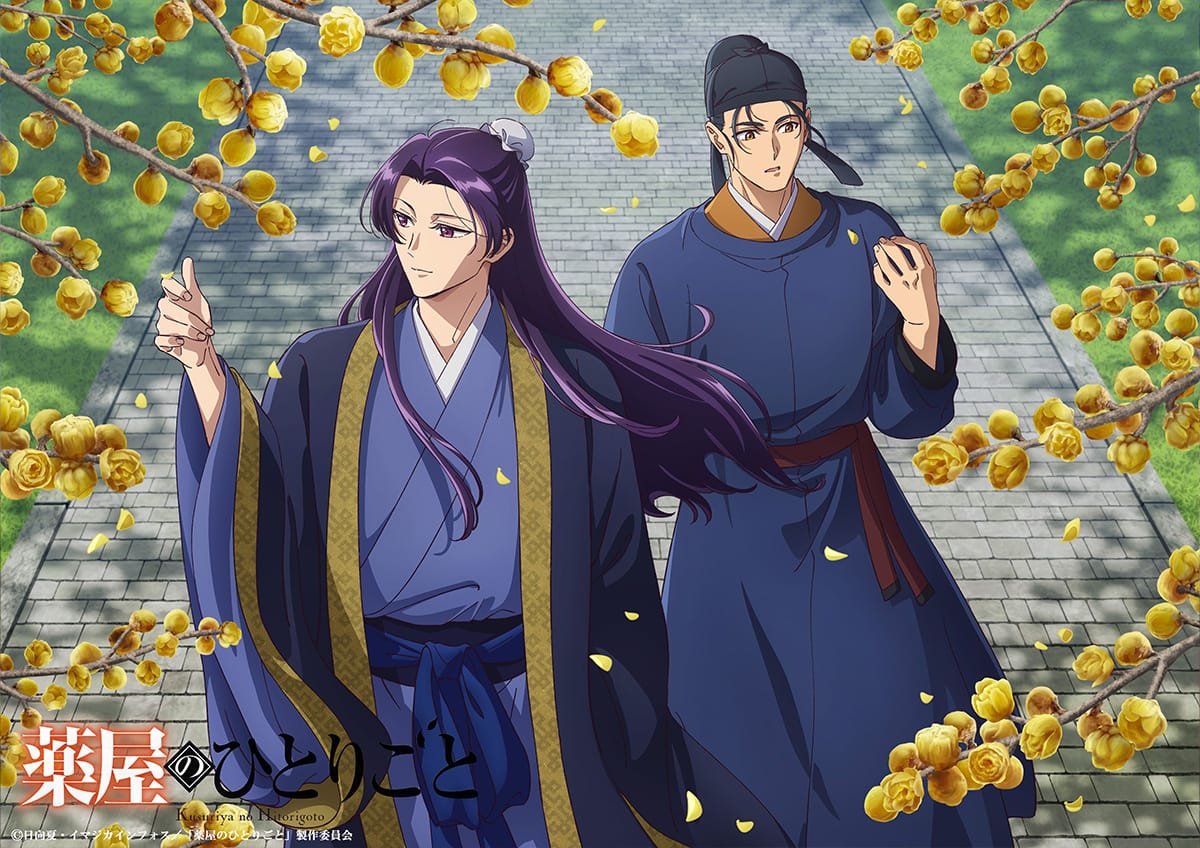
In February, the illustration featured Jinshi and Basen taking a moment to see the yellow wintersweet flowers during their walk.
Flower meaning: The wintersweet, or robai, is known for its tenacity for blooming amidst the cold weather, so it represents the idea of perseverance and hope, purity and renewal, and even the promise of warmer days ahead.
The meaning of the wintersweet flowers alongside Jinshi and Basen feels deeply fitting. Jinshi works tirelessly to complete his work inside the rear palace, while Basen is wholeheartedly loyal and dedicated to serving his master. Despite the difficulties, they both remain focused and hardworking.
March 2025 - Nanohana
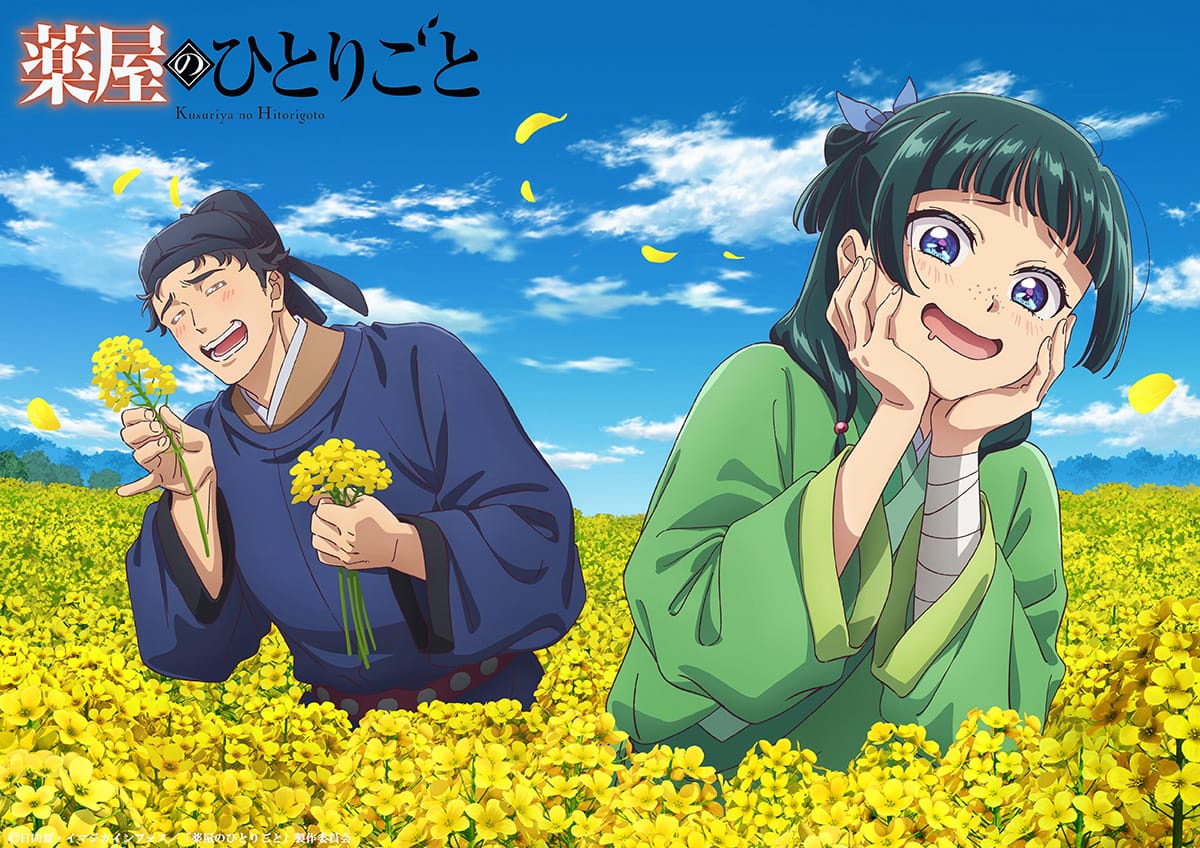
In March, Maomao and Lihaku were in a field of yellow nanohana flowers.
Flower meaning: The nanohana, also known as the rapeseed plant, vegetable, or canola flower, is one of the first Japanese flowers to signal the coming of spring. They often cover countryside fields and parks like a golden carpet, famous for reenergizing the spirits with positivity, joy, and vitality. Its beauty represents life, hope, and new beginnings. The nanohana plant and flowers are edible.
The flowers are cherished for their bright and cheerful nature, so it's no wonder that Maomao and Lihaku are enjoying them. Their friendship is comfortable enough that they can freely express themselves, like how the illustration perfectly represents Lihaku's personality, who is also just as strong and cheerful (golden retriever energy, as they say).
April 2025 - Sakura
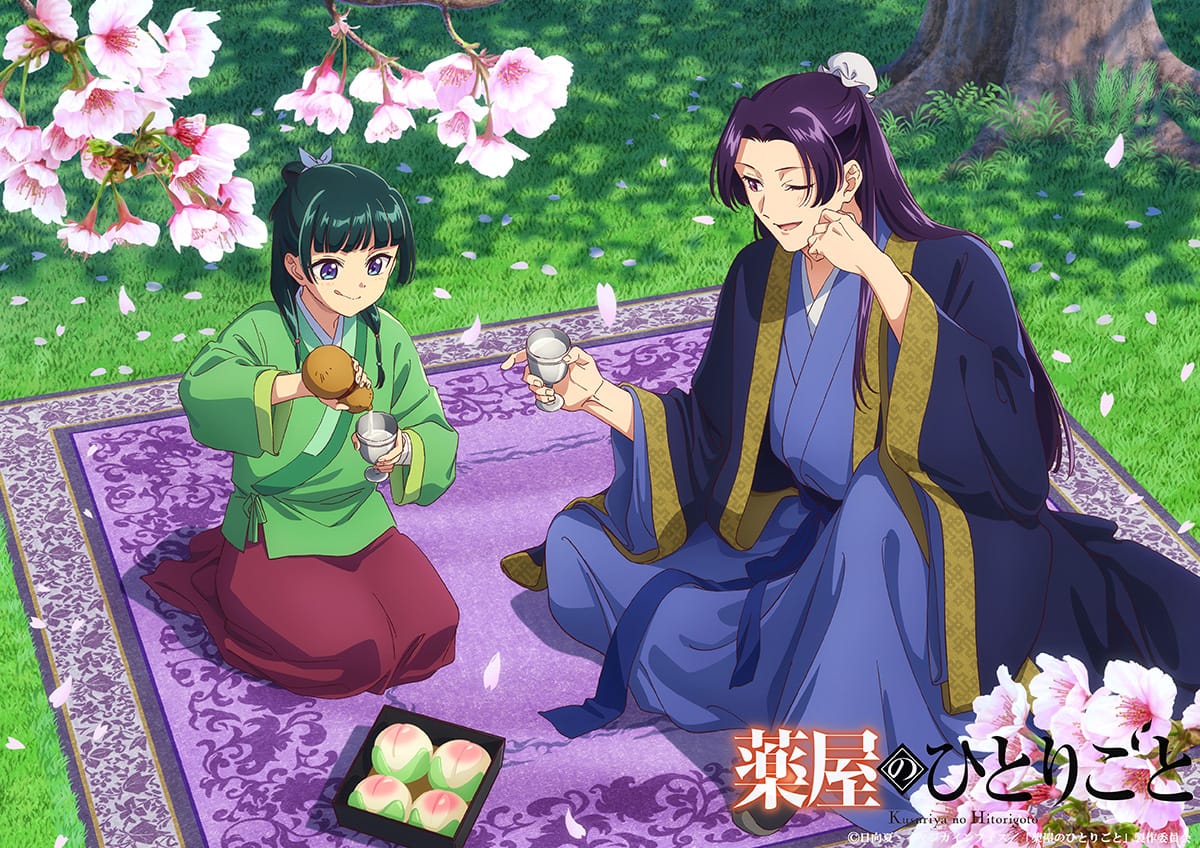
In April, the illustration shows Maomao and Jinshi enjoying some snacks and drinks under blooming cherry blossoms.
Flower meaning: The cherry blossom, or Sakura, is the most popular flower that blooms every Spring. It only appears for a short while, so family, friends, and loved ones often celebrate and come together for a special flower-viewing event called Hanami. The flowers bloom proudly with their pink and white blossoms, symbolizing the ephemeral beauty of life. Since the arrival of spring represents new beginnings, the blooming of cherry blossoms brings a sense of renewal and hope.
Sipping sake under the cherry blossom trees is one of the best ways to enjoy this tradition, which Maomao and Jinshi are doing in this illustration. It's also a funny tidbit to see Maomao with an opportunity for an excuse to consume alcohol. It's even funnier to see how this "date" comes after Lihaku, whom Jinshi was jealous of in Season 1.
May 2025 - Wisteria
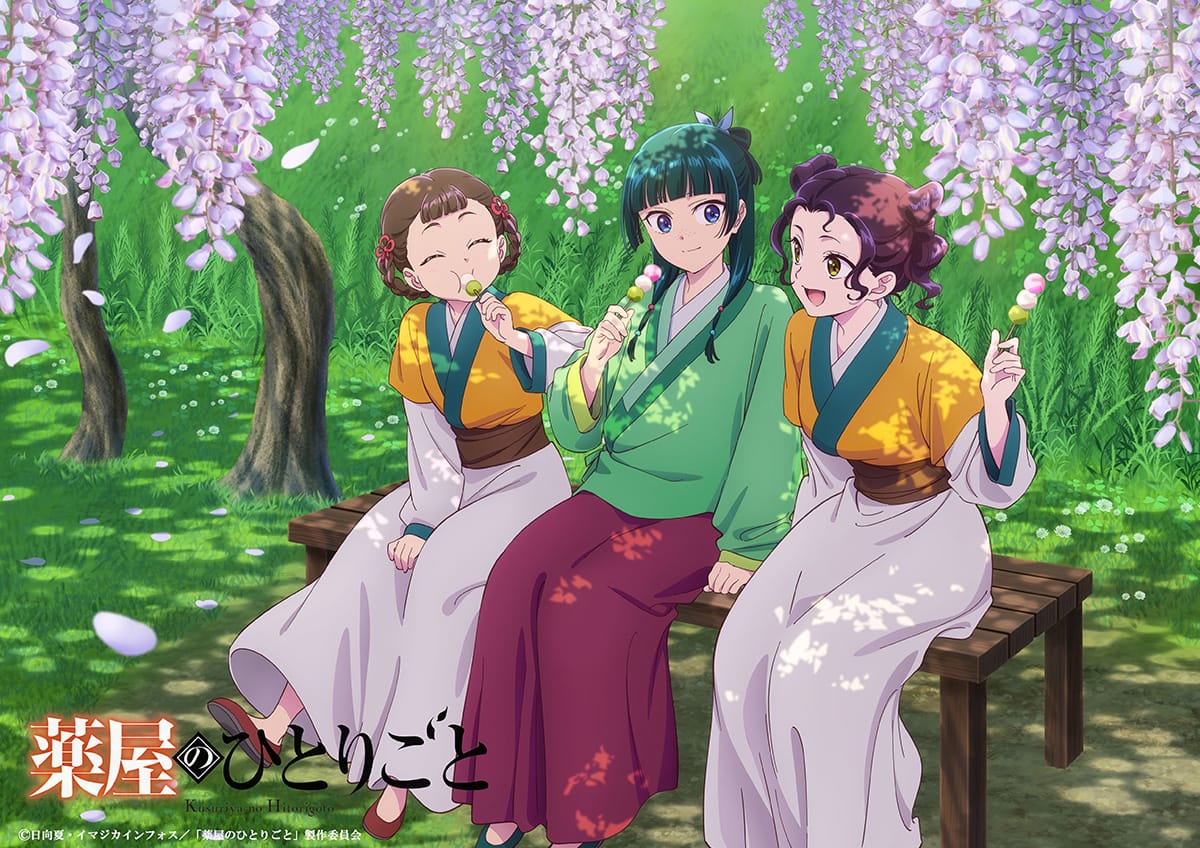
In May, we had an illustration of Maomao, Xiaolan, and Shisui enjoying sweet dumplings under a row of blooming wisteria trees.
Flower meaning: When the Wisteria begins to bloom in Japan, it is a seasonal sign of the last part of spring, when all the other flowers and colors start to fade. Following the cherry blossom, the wisteria flowers represent good luck, kindness, and longevity from their long white and purple vines. Its petals usually gently sway and fall abundantly, creating a colorful cascade of white, mauve, violet, and yellow, leaving viewers stunned and enchanted.
The hanami, or flower viewing, is also celebrated here in the illustration with Xiaolan and Shisui. It's fitting because the wisteria's blossoms, which are closely grouped together, also symbolize friendship. No one can deny that the bond that Maomao, Xiaolan, and Shisui have is a special one. The Season 2 opening and ending themes highlight this, but the illustration's release coincided with the reveal of Shisui's story arc and the finale, so it was both precious and bittersweet.
June 2025 - Hydrangeas
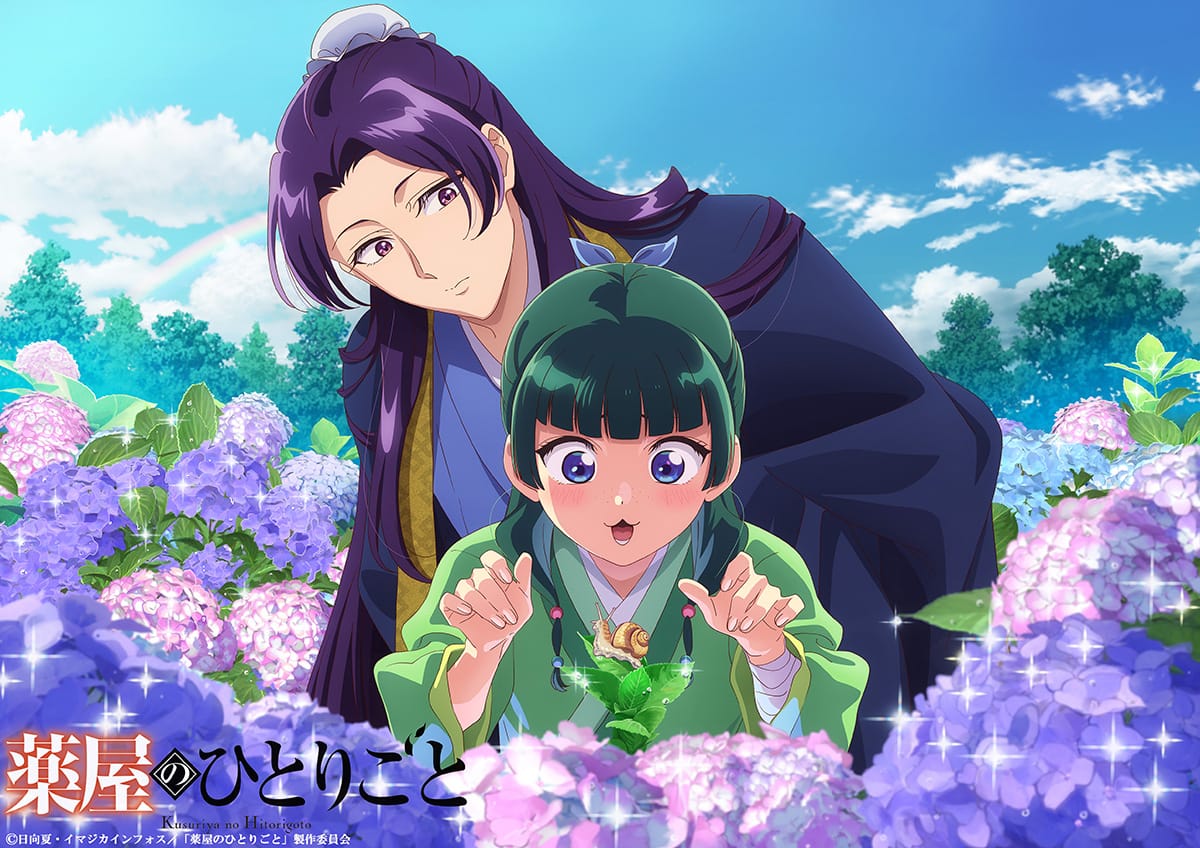
The illustration in June, which also marked a full year since these special illustrations started, featured Maomao and Jinshi coming across some colorful hydrangeas, with the apothecary also finding a small snail.
Flower meaning: June is the month of Ajisai, the Japanese Hydrangea, a flower that represents the arrival of the rainy season. Its white flowers symbolize goodness, pink for sincere affection, purple for long-lasting gratitude, and blue for apology or forgiveness. It is also regarded as an incredible flower since it changes color depending on its environment.
If you didn't know, the hydrangea is, in fact, slightly poisonous. The leaves contain cynaogenic glycosides, which, if ingested, cause unpleasant symptoms, such as nausea, vomiting, and dizziness. Despite this, the roots are actually used for medicinal purposes as antioxidants. This is the kind of information Maomao would definitely love, and it's no wonder she's looking at the snail and the shrubs with so much excitement. Jinshi, as always, watches her with curiosity.
And that's all I've got! Which part was your favorite? Did I miss anything? Comment them below, and let's fangirl together.
The visuals are available to download as mobile and desktop wallpapers on the official website. The second batch of seasonal visuals is currently ongoing and releases every 22nd of the month.
© Natsu Hyuga/Imagika Infos Co./The Apothecary Diaries” Production Committee
